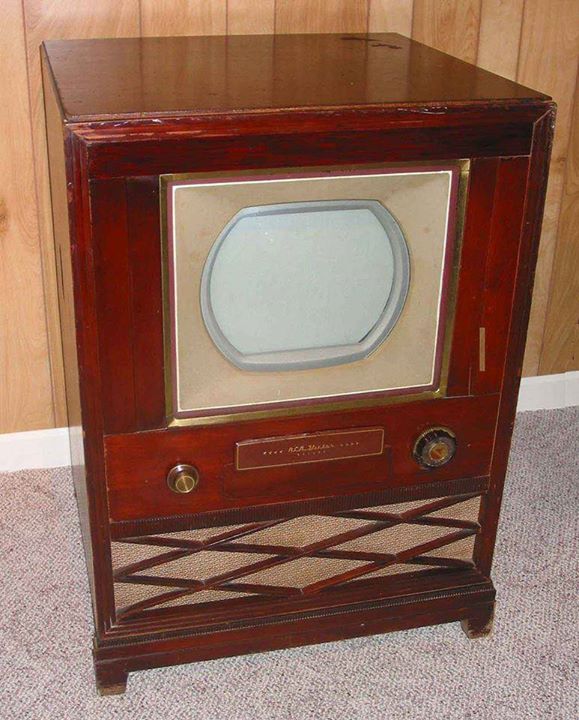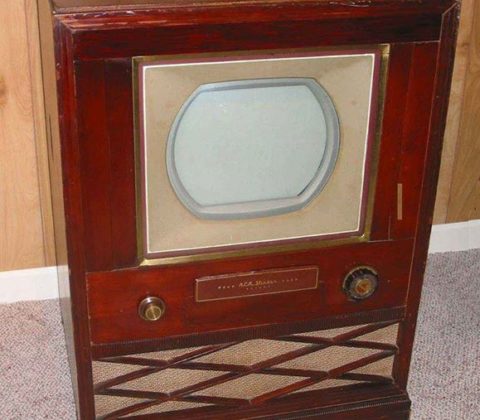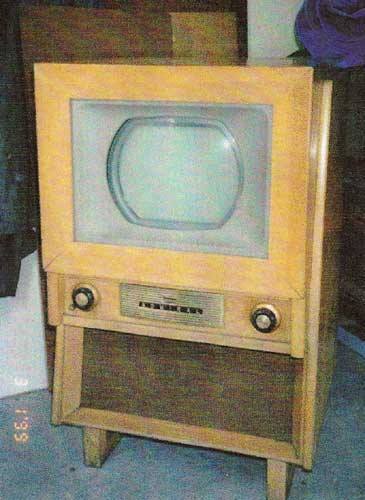

December 30, 1953…The First Color TV Sets Go On Sale
December 30, 1953…The First Color TV Sets Go On Sale
On December 17, 1953, the FCC approved the National Television System Committee’s recommendation of the RCA Dot Sequential color system.
With the New Year’s Day Rose Parade just ahead, RCA pulled all the stops to broadcast it in color, and set up 20 target markets for special color viewing events, from coast to coast.
Remember, at the time, there were no color sets available to the public, and the only people who had ever seen color television were those that had seen RCA’s experimental broadcasts at the RCA Showcase in Rockefeller Plaza.
So the event could be seen, RCA rushed 200 pre-production receivers to a few to their top dealers in each city for this special event’s viewing parties, which were mostly held in darkened hotel ballrooms. Most events had several black and white 21″ sets with color sets between them. This not only showed the difference, but with the small 12″ color screens, helped with detail.
About one third of the local stations (the NBC O&O stations) in the target markets had color transmitters, but for those target markets that could not transmit in color, RCA had AT&T provide a color line to the display venues.
The target cities were, Los Angeles, San Francisco, Salt Lake City, Denver, Omaha, St. Paul, Chicago, Milwaukee, St. Louis, Detroit, Toledo, Cleveland, Cincinnati, Johnstown, Philadelphia, Washington, Baltimore, Wilkesbarre, New York and New Haven.
The RCA sets were the Model 5 prototypes with a dark cherry finish, and with only a few minor adjustments, it went on to become the CT-100 which was the first mass produced RCA color set. Starting March 25, 1954, 5,000 CT-100’s were manufactured in RCA’s Bloomington, Indiana plant.
Also shown here in a light wood finish is the Admiral C1617A which went to market the same day, as RCA was not the only set manufacturer with chips in the color game.
In April of ’54, the first 25 mass produced RCA TK40 color cameras began to be shipped. Prior to this, there were only four prototypes at the Colonial Theater in New York.
By the way, the sets sold for just over $1,000, which is the equivalent of $8,800 now. Neither Admiral or RCA were expecting to sell many receivers, but they wanted the public to know that color was here to stay and who to turn to when the time was right. -Bobby Ellerbee

Those small screens! They look almost as small as the TK-41 screens the cameramen looked at
The FCC did not approve the “RCA dot sequential system”. They approved the NTSC system, which was developed by RCA and others, like Philco and Hazeltine Labs. Also, it has been argued that the actual “first” NTSC receiver to be offered to the public was Admiral’s, as pictured in your illustration. Others believe that it was the Westinghouse model. Whichever it may have been, RCA wasn’t the first to put their set, the CT-100, on sale to the public. My sources include the RCA “Petition to the FCC” commonly refered to as the “Red Book”; “Color Television Engineering” by John W. Wentworth; and “Color Television Standards NTSC” by Donald G. Fink.
Always loved the furniture that surrounded the television.
CBS sold some color TV’s to the public in 1951 but they were mechanical when in color mode: http://www.tvhistory.tv/1951%20June%2025%20CBS%20Color%20Set%20NYT%20Ad%20TEXT.JPG
I didnt know Admiral had an early CTC-100 type set. WoW!
I remember the Chief Engineer joking that NTSC meant “Never Twice Same Color”. He also had lines for PAL and SECAM but I’ve forgotten those.
I got my first color television set–a Sears Silvertone–in 1965. When I lay in bed, I could see the antenna lights of the two stations on the mountain at night. So I used the rabbit ears on the tv set to receive those stations. But I also purchased Teleprompter Cable for Birmingham, Nashville, and Atlanta. Back in those days (1960s) we had Translators, Repeaters, and Cable. That’s how you watched television in the low-density areas (as opposed to the urban areas of New York, Chicago, LA, etc.). But I watched “Bob and Kay” in Chicago (at NBC) in late 1954 (perhaps early ’55). Bob’s face was orange, and Kay’s was purple. But it was a good start. And the systems were the same. They just needed to twix the knobs a bit to get the proper colors. I won’t comment on when we showed Kentucky Fried Chicken commercials on our RCA system. But we sat there and laughed. (It didn’t look like chicken!)
Today I have a curved LG 55″ OLED 4K. I remember the first Zenith B&W we had. The tuning knobs looked like the CBS eye. I think my dad bought that the year I was born 1954.
whenever we used to ask my Dad to buy us a color tv, he would always ask what color we wanted.
Too bad most TV shows of the era were films in B & W. Disney’s Wonderful World of Color and Bonanza were two of the earliest shows in my memory to broadcast in color.
Here’s a TV segment about the announcement that I grabbed about 30 years ago during a kinescope transfer session… https://www.youtube.com/watch?v=ojJCJIaDp9Q